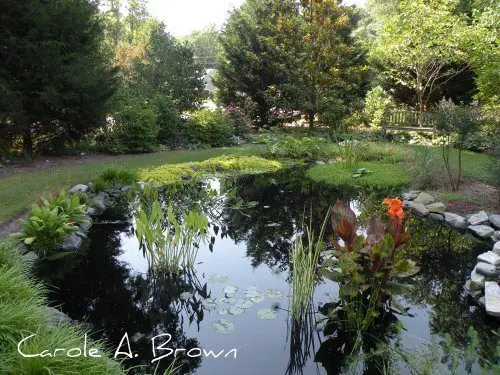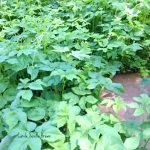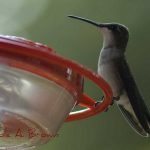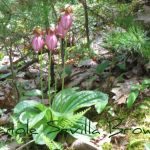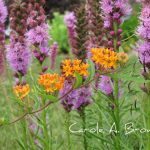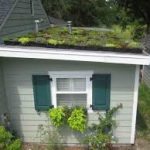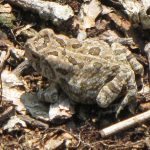One of my favorite things to do in summer is to sit by a pond and watch the dragonflies and damselflies perform their aerial acrobatics. These amazingly beautiful and agile fliers create a swirl of color before my eyes, darting across the surface of the water and flashing in the sun like precious jewels.
There are 447 species of Odonata in the U.S., including 316 dragonflies (suborder Anisoptera) and 131 damselflies (suborder Zygoptera).
Dragonflies and damselflies require clean, pollution free water to successfully reproduce. Pollution includes sewage, factory effluent, agricultural run-off, and pesticides. No dragonfly can breed in badly polluted water, and dragonfly populations are often used as quick indicators of river and stream health.
Water sources include ponds, seeps, slow-moving streams, faster rivers and streams, marshes, bogs, and lakes.
You can create a welcoming dragonfly habitat in your Ecosystem Garden by installing a dragonfly pond, which, depending on the size you choose, will attract at least a few dragonflies to your pond to lay their eggs, and bring some of these winged wonders to your garden.
Choose a level location which receives at least 6 hours of sunlight each day. You can use a preformed, rigid pond kit or you can install a flexible liner. What you want is a pond that has varying water depths to accommodate submerged, floating, and emergent plants.
While the dragonflies do not actually feed on the plants, some dragonflies insert their eggs into the stems of emergent plant. Others use the plants to perch on, submerged vegetation is used as a refuge by the larva, and some dragonfly nymphs use the stems to crawl out of the water when it is time to emerge into their adult form.
It is important to keep in mind, and to steel yourself, that when you go to the pond store to purchase your liner the staff will be intent on selling you a lot of things that you do not need for a dragonfly pond. First, they will try to sell you pumps and filters, telling you that you must have them to keep your water clean. When was the last time you came upon a natural pond that had these items? That’s right. Mother Nature does not provide these gadgets and you do not need them either.
Next, they will try to tell you that you must have fish in your pond, especially those expensive fancy koi. You have to understand that the profit margin on fish is much higher that the margin on your liner, so of course they want you to buy fish. You must steel yourself and repeat the mantra, “I do not need fish in my pond.” Keep repeating this the whole time you are in the pond store, and you will emerge unscathed!
The usual reason for telling you that you have to have fish is because they will eat mosquito larva. But dragonfly and damselfly larva are carnivores that thrive on eating mosquito larva, so give them the opportunity to do just that. The fish will actually eat the dragonfly larva. Many dragonflies will not leg eggs in any pond with fish so you will be defeating your purpose if you stock your pond with any fish.
Each adult dragonfly is only present for about a month. The remainder of the year is spent mostly in the larval or nymph stage. Because of this, it is important to remember that a dragonfly pond is not a swimming pool or a bathtub. That muck in the bottom plays an important role in providing shelter to the nymphs. Do not remove too much of this or you will be throwing away next summer’s beautiful flying jewels.
Now that you’ve installed your dragonfly pond, pull up a chair, grab your binoculars, and watch these amazing aerial acrobats flit around your pond. It’s better than TV any day!
More From Ecosystem Gardening:
Submit your review | |

